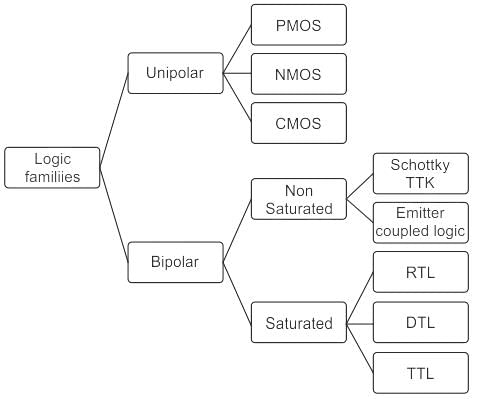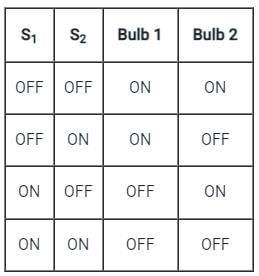Electrical Engineering (EE) Exam > Electrical Engineering (EE) Tests > Test: Logic Families - 1 - Electrical Engineering (EE) MCQ
Test: Logic Families - 1 - Electrical Engineering (EE) MCQ
Test Description
10 Questions MCQ Test - Test: Logic Families - 1
Test: Logic Families - 1 for Electrical Engineering (EE) 2025 is part of Electrical Engineering (EE) preparation. The Test: Logic Families - 1 questions and answers have been prepared
according to the Electrical Engineering (EE) exam syllabus.The Test: Logic Families - 1 MCQs are made for Electrical Engineering (EE) 2025 Exam.
Find important definitions, questions, notes, meanings, examples, exercises, MCQs and online tests for Test: Logic Families - 1 below.
Solutions of Test: Logic Families - 1 questions in English are available as part of our course for Electrical Engineering (EE) & Test: Logic Families - 1 solutions in
Hindi for Electrical Engineering (EE) course.
Download more important topics, notes, lectures and mock test series for Electrical Engineering (EE) Exam by signing up for free. Attempt Test: Logic Families - 1 | 10 questions in 30 minutes | Mock test for Electrical Engineering (EE) preparation | Free important questions MCQ to study for Electrical Engineering (EE) Exam | Download free PDF with solutions
Detailed Solution for Test: Logic Families - 1 - Question 1
Test: Logic Families - 1 - Question 2
The figure of merit of a logic family is given by the product of:
Detailed Solution for Test: Logic Families - 1 - Question 2
Test: Logic Families - 1 - Question 3
Two voltage given as -2 V and -1 V in positive logic convention represent:
Detailed Solution for Test: Logic Families - 1 - Question 3
Detailed Solution for Test: Logic Families - 1 - Question 4
Detailed Solution for Test: Logic Families - 1 - Question 5
Test: Logic Families - 1 - Question 6
Which of the following does not belong to TTL subclasses?
Detailed Solution for Test: Logic Families - 1 - Question 6
Test: Logic Families - 1 - Question 7
A Darlington emitter-follower circuit is sometimes used in the output stage of a TTL gate in order to
Detailed Solution for Test: Logic Families - 1 - Question 7
Detailed Solution for Test: Logic Families - 1 - Question 8
Detailed Solution for Test: Logic Families - 1 - Question 9
Test: Logic Families - 1 - Question 10
The logic function f(X,Y) realized by the given circuit is

Detailed Solution for Test: Logic Families - 1 - Question 10
Information about Test: Logic Families - 1 Page
In this test you can find the Exam questions for Test: Logic Families - 1 solved & explained in the simplest way possible.
Besides giving Questions and answers for Test: Logic Families - 1, EduRev gives you an ample number of Online tests for practice
Download as PDF



































